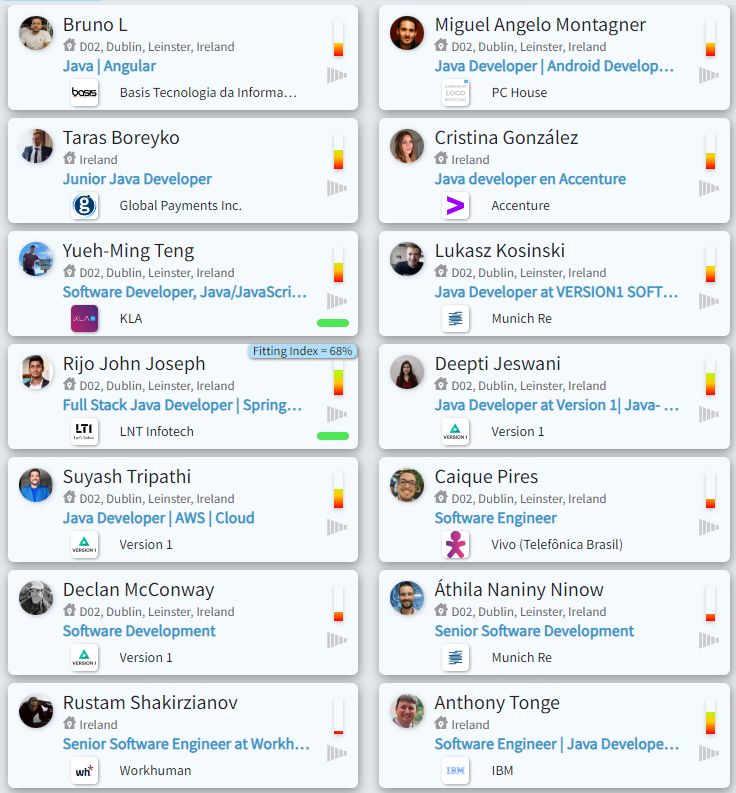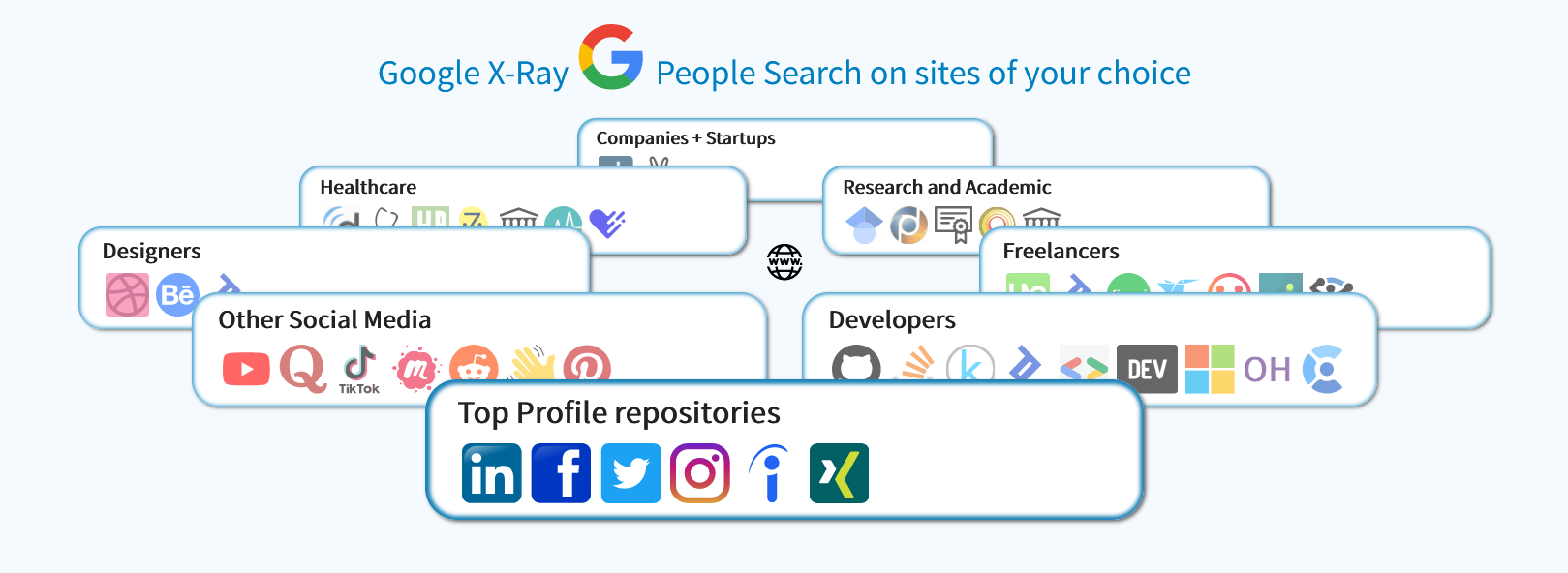What are the steps in the Talent Acquisition Process?
Discover the essentials of the Talent Acquisition process with our informative guide. Elevate your hiring strategy with proven steps and expert insights.
A successful business thrives on its most valuable asset - its workforce and talent acquisition. As such, Talent Acquisition has emerged as a strategic function of an organisation — one that is pivotal to its growth and overall performance. But what exactly does it entail?
Unlike traditional recruitment, Talent Acquisition does not merely revolve around filling vacancies. Instead, it involves a holistic strategy that seeks to attract, find, hire, and retain individuals who possess the necessary skills and potential for the company's long-term success.
It includes procedures such as developing an employer brand, creating a talent pipeline, candidate sourcing, and onboarding. A comprehensive Talent Acquisition strategy will also consider the job market analysis and understand the company's unique staffing solutions. The significance of this broad-ranging approach is often echoed in rapidly evolving industries where the pool of skilled professionals narrows, causing a talent war amongst competing businesses.
Its importance is not limited to large corporations alone. Whether a startup or a multinational firm, competent Talent Acquisition can foster an environment conducive to employee satisfaction, reducing the churn while maintaining a positive employer brand. All these elements are integral to a thriving business and act as an engine of growth by attracting top tier candidates.
This discipline focuses on aligning the skills and potentials of candidates with the overarching objectives of the business. With the framework of competency assessment, the Talent Acquisition team can identify, attract, and hire candidates who will propel the business forward.
In light of the current digital age, Talent Acquisition also encompasses navigating through digital networks and social platforms. Integration of technology has made this task both simpler and yet more complex, allowing businesses to reach a global talent pool and demanding a more effective hiring strategy. The function of Talent Acquisition, thus, has evolved from limited hiring activity to a structure that drives growth, evaluates future business needs, and challenges the traditional staffing models, eventually shaping them into efficient, holistic human resource systems.
All considered, effective Talent Acquisition is not an isolated HR function. Instead, it is a recruitment strategy, a brand builder, a proactive approach to hiring. It is forecasting workforce planning, managing talent pipeline, and ultimately, a vehicle that can pragmatically drive the business towards its strategic landmarks.
The First Step: Planning Talent Acquisition
The Role of Recruitment Metrics in Planning Processes
As with any other strategic initiative, the planning phase of the Talent Acquisition process begins with data. Recruitment metrics serve as a map, guiding the way by revealing patterns, pinpointing obstacles and identifying successful strategies. These statistics offer invaluable insights into areas such as time-to-fill, cost-per-hire, and quality-of-hire, ultimately forming an essential part of a successful Recruitment Strategy.
Metrics like application completion rate, source of hire, and applicant to interview ratio provide a holistic perspective, thereby enabling organisations to streamline their hiring processes. Tracking these metrics not only ensures a more efficient recruitment strategy but also cuts unnecessary expenses while enhancing candidate experience. Moreover, the data extracted aids in mapping future recruitment needs by highlighting trends and probable gaps, thereby enhancing Workforce Planning in the long run.
Identifying Talent Pipeline Potential
Once the metrics have been analysed, the next step towards effective Talent Acquisition is identifying potential candidates and building a robust Talent Pipeline. Having ready access to suitably qualified individuals can drastically reduce the time-to-hire and ease the process of Candidate Sourcing, especially for critical positions. Additionally, a strong talent pipeline supports the business in meeting its rapidly changing personnel needs.
At this stage, the use of Applicant Tracking Systems (ATS) can significantly improve the process. ATS can help in optimising the recruitment process by collecting, organising, and analysing candidate information, thus making it easier to source potential talent for corporate recruiting. Moreover, actively engaging with passive candidates and nurturing a relationship with them ensures a constant flow of talent, positively impacting the talent pipeline potential.
Traditional ATS often demand significant maintenance efforts to ensure data remains current, particularly for Talent Pipelines cultivated through extensive networking and relationship-building endeavors. Without regular updates, these systems can swiftly become repositories of outdated information as Talents frequently refresh their profiles with new career steps, leaving ATS data stale.
Thankfully, advancements in technology provide solutions for effortlessly updating and maintaining candidate profiles with current career statuses, such as synchronization with platforms like LinkedIn. Jobin.cloud exemplifies one such innovative ATS system, capable of automatically updating career changes for numerous candidate profiles within your Talent Pools.

Recruitment Technology in Planning
In this technologically advanced era, a mere reliance on conventional recruitment methods such as job postings or career fairs is not sufficient. Today, recruitment technology plays a vital role in talent acquisition planning. Incorporating tools like Artificial Intelligence (AI), Applicant Tracking Systems (ATS), and recruitment software has revolutionised the process, making it faster, more efficient, and cost-effective.
Technology aids in carrying out comprehensive Job Market Analysis, identifying trends and patterns, and comparing data on a broader scale. It is also an effective way of candidate sourcing, targeting individuals through job portals, professional networks, and social media channels. Additionally, recruitment analytics tools provide a data-driven approach to HR decisions, promoting transparency, consistency, and accuracy.
Furthermore, Employee Onboarding software eases the new hires transition into the company, enhancing their overall experience and promoting higher retention rates. Thus, while planning the recruitment strategy and process, it is crucial to leverage technology and the myriad benefits it offers optimally. The key is to utilise these technologies effectively to create a balanced and streamlined approach, combining the best parts of human intuition with data-driven insights.
The Second Step: Implementing Strategies for Talent Acquisition
The Concept and Importance of Talent Sourcing
Evolving business paradigms, coupled with the rapid transformation of professional landscapes, has made Talent Sourcing a competency of critical business importance. It refers to proactively identifying, engaging, and nurturing relationships with potential candidates who are not actively looking for a career change. Talent Sourcing forms an integral part of a company’s Recruitment Strategy — its effectiveness often being a determining factor in the company's ability to attract, hire, and retain high-calibre professionals.
Effective Talent Sourcing aids in building a robust talent pipeline and creating a candidate database for future needs. This approach ensures that the Hiring Process is not prone to the pressures of time and insufficient suitable applicants, resulting in a carefully selected, high-quality aggregation of potential hires. Talent Sourcing also provides an opportunity to create a positive employer brand, as regular engagement with passive candidates help shape their perception of the company culture and work environment.
Moreover, strategised Talent Sourcing can aid in Diversified Recruitment, ensuring the hiring of professionals from varied backgrounds, thereby creating a more inclusive, innovative, and productive workforce within an organization. Consequently, Talent Sourcing bolsters Talent Management, contributing significantly to the overall business growth and its long-term success.

The Use of Recruitment Technology in Talent Sourcing
Effective Talent Sourcing often involves levering Recruitment Technology to gain an upper hand in this fiercely competitive sector. Utilisation of Applicant Tracking Systems (ATS), AI and Machine Learning, and Recruitment Automation Tools, assists in delivering a streamlined and efficient sourcing process.
Recruitment technology tools like ATS come equipped with multi-platform Candidate Sourcing tools, algorithm-based pipeline tracking, contacts and email finder, multi-platform Outreach systems, among other features. They allow for effective Talent Management, from sourcing potential candidates to onboarding new hires. These sophisticated technologies also aid in streamline Recruiting processes offering automation of the more repetitive aspects of data management, scheduling and manage streamlined communication, providing valuable time saving and efficiency.
For instance, AI can automate a significant part of the sourcing process, including identification of fitting candidates, job advertising, initial candidate screening, scheduling interviews, and follow-up communication. It can filter and rank candidates based on predetermined criteria in a fraction of the time it would take a human recruiter. Hence, the savvy integration of Recruitment Technology into the Talent Sourcing process results in a more streamlined, efficient, and productive approach, driving the company's success and growth.
Incorporating Hiring Best Practices
Despite the aid of technology, the human element remains a significant component in the hiring process. Incorporating best hiring practices contributes to strengthening the overall Recruitment Strategy. These practices may broadly encompass components such as detailing clear job descriptions, communication transparency, nurturing candidate relationships, fostering diversity, and nurturing a positive work culture.
For instance, a well-structured and defined job description is often the candidate's first point of interaction with the company brand. Providing clear and accurate job descriptions can attract highly qualified candidates by ensuring an understanding of the job role, responsibilities, and expectations. Communication transparency during the hiring process not only fosters a positive employer brand but also enhances the candidate experience.
Diversity hiring is another factor that has become a staple in hiring practices, mirroring the global shift towards inclusivity across sectors. A diverse workforce fosters innovation, productivity, and overall company performance. Lastly, integrating new hires into the company culture effectively through structured Employee Onboarding programs is crucial in driving employee engagement and retention.
Given the impact and profound implications, the integration of best hiring practices in Talent Acquisition strategies is essential for finding, attracting, and retaining top-tier talent. This approach is the cornerstone of building a successful organisation, driving innovation, creating a positive employer brand, and ultimately fostering business growth and success.
The Third Step: Evaluating the Effectivity of Talent Acquisition
Assessing the Use of Recruitment Metrics in Evaluation
In the pursuit of corporate excellence, evaluation plays a critical role. It enables periodic introspection, understanding the efficiency of established practices, and exploring avenues for improvement, and recruitment is no exception to this rule. Recruitment Metrics serves as a significant measure of evaluating the success of Talent Acquisition endeavours. These statistics shed light on the recruitment strategy's various aspects, highlighting its strengths and identifying areas that require improvement.
Metrics like offer acceptance rate, source of hire, time to fill, and cost per hire are insightful indicators of the effectiveness of the Recruitment Strategy. They help scrutinise the sourcing channels, understand the company's positioning in the job market, analyse the impact on the budget, and evaluate the overall efficiency of Human Resources Management. This data-backed evaluation provides a comprehensive understanding of the hiring process, helping refine the strategies, rectify the shortcomings, and enhance the company's Talent Acquisition capabilities.
Paying heed to these recruitment metrics provides actionable insights into the Hiring Process and workforce planning and eventually aids in aligning Talent Management practices with the company's broader objectives. It paves the way for a tactical approach towards Corporate Recruiting, fostering a sustainable and performance-enhancing talent acquisition process.
Analysing the Health of the Talent Pipeline
In the context of continuous organisational growth, the wellness of the Talent Pipeline holds paramount importance. It usually refers to the flow and quality of candidates that potentially align with the company's long-term vision and can fill the roles efficiently as they emerge.
Analysing the health of the talent pipeline usually revolves around understanding the potential hires' qualifications, experience, skills, and overall suitability for the company. Tools such as competency assessment help discern the candidate's abilities and explore how they align with the company's current and future business requirements.
An optimal talent pipeline is diverse, dynamic, and rich with high-calibre professionals, ready to bring value to the company. Evaluating the talent pipeline's health provides a qualitative and quantitative measure of your Talent Acquisition strategy's effectiveness. Constant monitoring and maintenance of the pipeline ensure a consistent pool of candidates, reducing hiring time, promoting workforce diversity, and leading to overall business growth.
The Role of Recruitment Technology in Post-acquisition Assessments
Post-acquisition Assessment forms an integral part of the Talent Acquisition process. It evaluates the newly hired employee's performance, the hiring process’s effectiveness, and the subsequent alignment with the company's overall objectives. In this phase, recruitment technologies prove to be incredibly helpful. They offer an array of applications that can track, measure, and analyse post-acquisition data, thereby marking the efficiency of the entire hiring process.
Tools like Applicant Tracking Systems can provide significant post-hire data, including performance metrics, retention rates, and feedback analysis. Such information is key to understanding the effectiveness of various hiring strategies and the proficiency of the onboarding process. Technological innovations in the field of HR analytics, such as predictive analysis, AI algorithms, and more, provide comprehensive insights into these post-acquisition evaluation aspects.
Recruitment technologies not only provide quantitative data but also offer qualitative insights by gathering feedback from the new hires on their experience throughout the hiring process. Such information can be critical in improving candidate experience and building a strong employer brand.
As organisations strive for growth, the effective utilisation of post-acquisition assessments becomes an essential aspect of Human Resources Management. By integrating technology and data analytics into the process, companies can create more aligned and proficiency-driven talent acquisition strategies based on both their current performance and future Business and Workforce Planning projections.
Talent Acquisition: A Key Driver of Business Success and Future Trends
Just as meticulously planned strategy translates into a successful business, a well-structured Talent Acquisition process forms the backbone of the company's prosperity. It is not just about hiring right; it's about hiring right for the future. The strength of an organisation often lies in its ability to attract and retain a workforce equipped with necessary skills, aptitude, and a mindset in tune with the company's vision. Therefore, efficient Talent Acquisition is a crucial determinant of business success.
Comprehensive Talent Management, effective Candidate Sourcing, advanced Recruitment Analytics, and streamlined Applicant Tracking blend to create robust Talent Acquisition procedures. These methods, along with other components such as Executive Search, Competency Assessment, and efficient Hiring Practices, ensure the organisation aligns with its strategic objectives, forming the bedrock for long-term growth and improved business output. Not to mention, the impact of a strong Employee Onboarding process in enhancing the hired talent’s productivity, loyalty, and overall contribution to the organisation's growth.
As we delve further into the digital age, Talent Acquisition is set to undergo a transformation. Technological advances will continue to shape the processes, continuously evolving to increase efficiency, reduce bias, and tap into a more global talent pool. An emphasis on AI-powered Recruitment Tools, advanced HR Analytics, and automation can be envisaged, becoming mainstream features of the future Talent Acquisition landscape.
Besides technology, methodological changes are also anticipated. There will be a more pronounced shift towards a candidate-centric Hiring Process, underlining the importance of a positive candidate experience and employer branding. Diversity hiring would likely widen in scope, promoting differing perspectives and ideas resulting in an enriched work environment. Furthermore, with the rise in remote working, virtual recruitment and onboarding could become the new normal, redefining the traditional boundaries of Talent Acquisition.
All in all, Talent Acquisition is a dynamic, complex process, continually evolving in the face of technological and methodological advances. It stands as a vital function of business operations, with its effectiveness directly influencing organisational success. As we chart into the future, businesses that adapt to these changes, weaving them into their Talent Acquisition strategy, would likely emerge as leaders in the global corporate industry.






